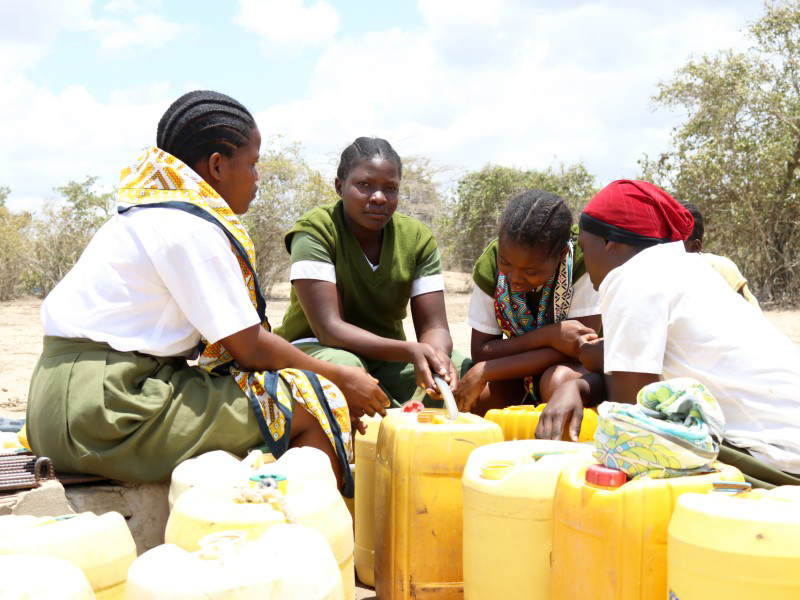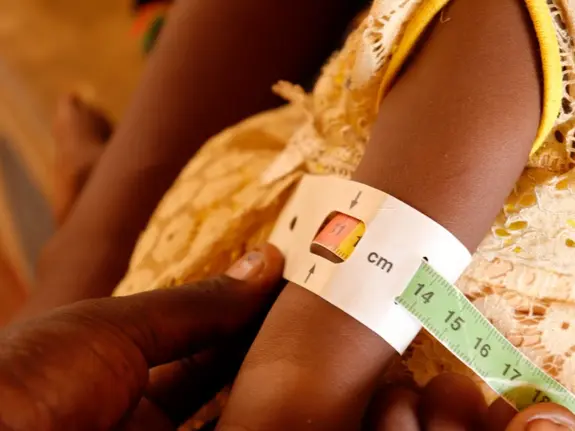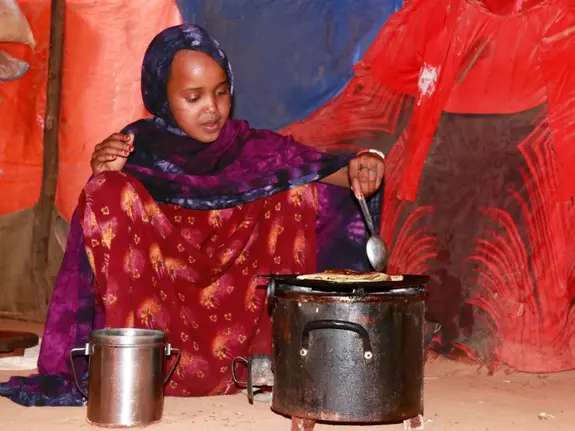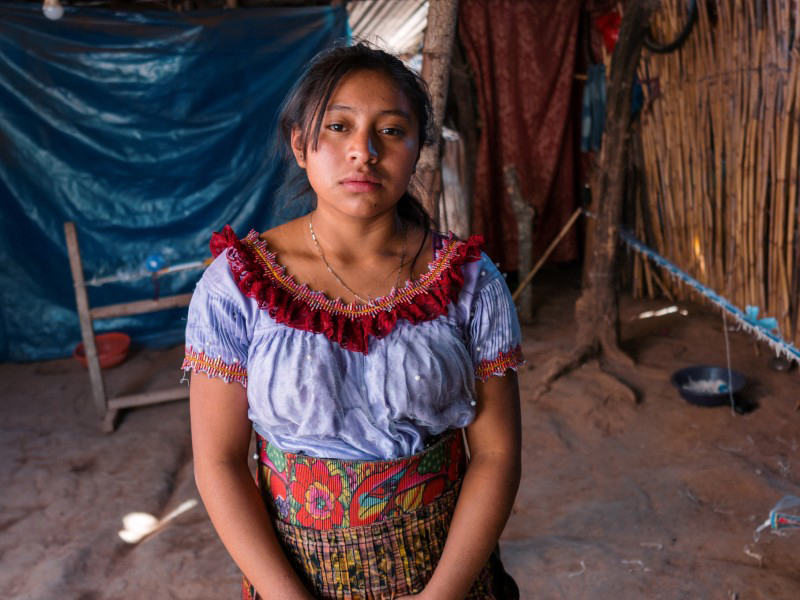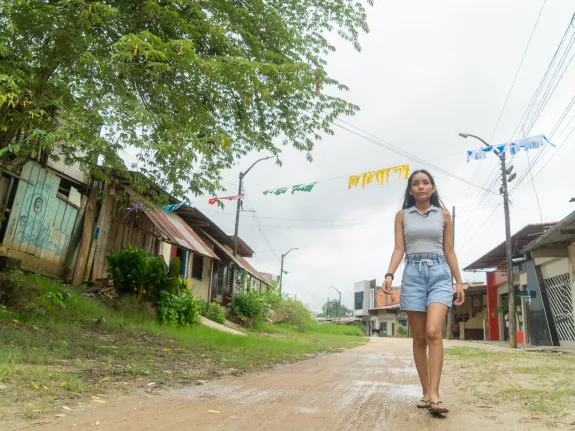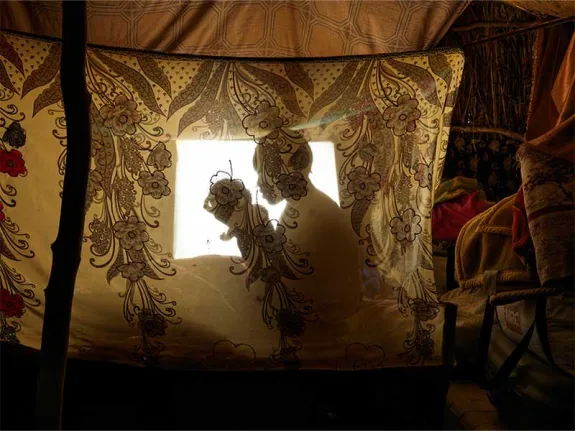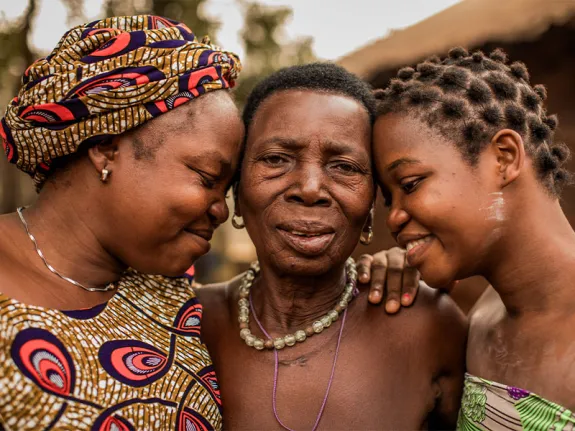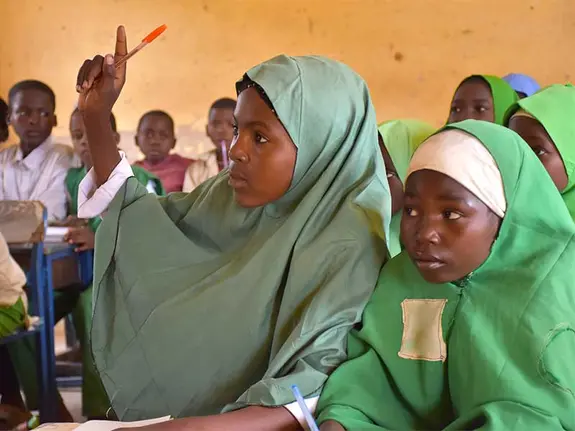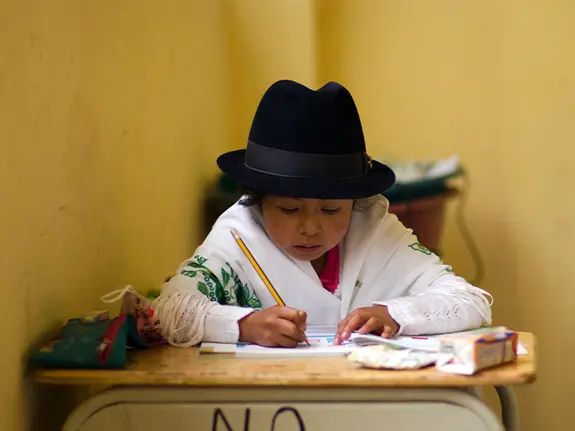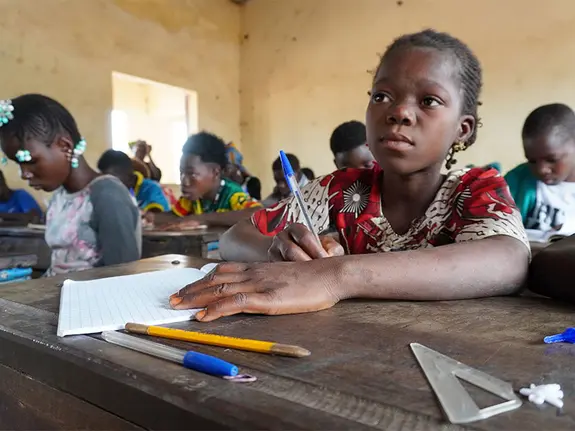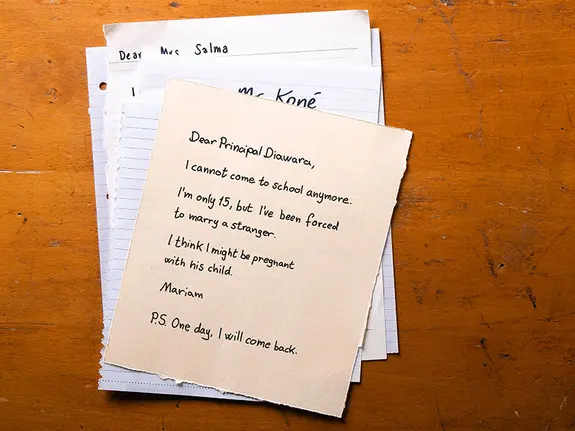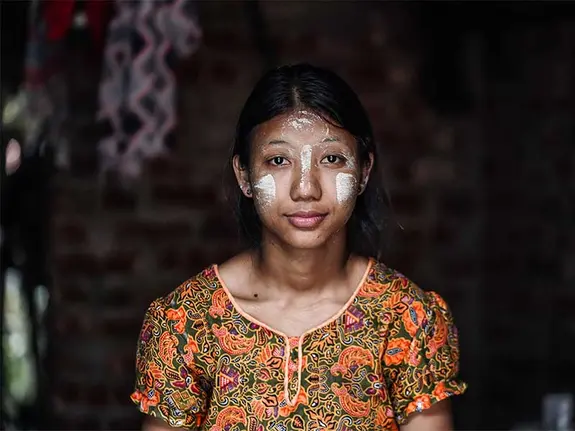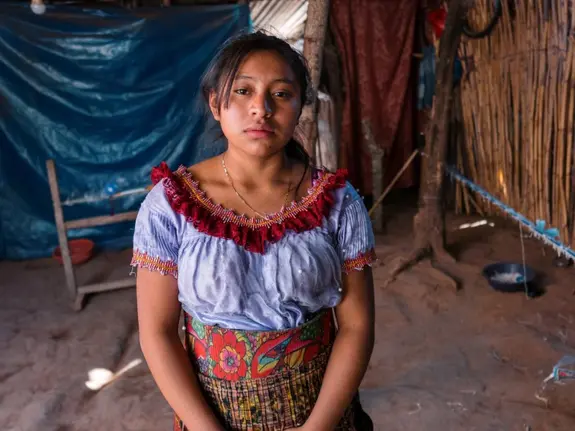
For girls facing hunger caused by drought, the lack of water poses a hygiene problem too – especially during their period.
“Many girls are unable to wash before coming to school because of the water shortages,” explains Jenitor.
“At school, the situation is the same. We don’t have water to drink nor wash our hands. Toilets run without water and become dirty and a breeding point for diseases.
Girls’ education
Girls are also being forced to give up their education to help make ends meet. Instead of going to school, they help their family find food, water or things that can be sold to buy food.
“Things have become tough and we need to support our parents whether we like it or not,” says 14-year-old Ramla in Kenya.
“As children, we spend a lot of time working, cutting trees for charcoal or fetching firewood to sell, instead of going to school.”
Ramla lives in the same region as Jenitor and shares her concern for girls’ education during this crisis.
“Our rights as children are being violated every day during the drought periods but we don’t have any say,” says Ramla.
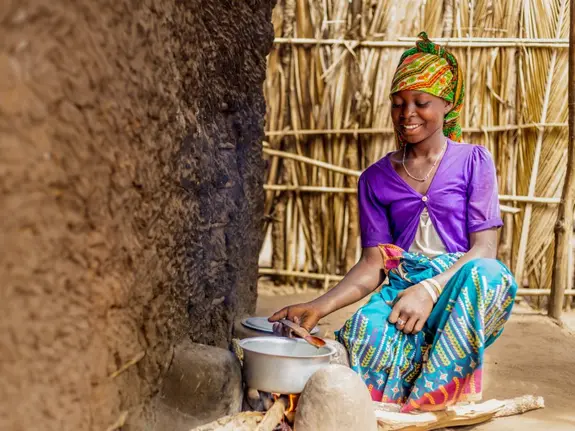
Over in Mozambique, Beti is another young girl shouldering a heavy weight of responsibility at such a young age.
She and her seven siblings were orphaned during conflict. They now live with their grandmother.
Beti wants to be a nurse but doesn’t go to school so she can care for her family instead.
“I am worried that if we do not have food, my grandmother will not eat,” says Beti.
Beti is just 15.
For the girls who do manage to stay in school, they often turn up with an empty stomach making it much harder to concentrate – like Amina who also lives in Mozambique.
“I wake up at 5am to walk to school. I study for four hours and I come every day. I do not have breakfast so sometimes I get very tired,” says Amina.
If girls become stunted it can affect their cognitive development too, impacting on what they are able to achieve at school.
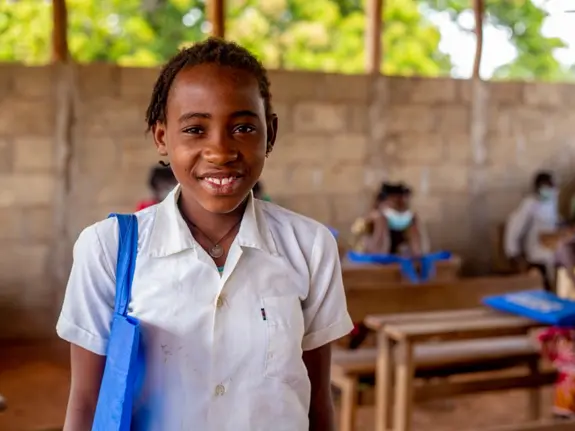
Girls’ safety
A hunger crisis can also push girls to take extreme measures to survive.
These impede their dignity and put them at risk of harm: from child marriage (which is often arranged to relieve families of finding food for one more person) to sexual exploitation. Both have lasting consequences.
"Girls are forced to lose their dignity in order to be able to eat."
Adalvira dos Santos, Children Protection Supervisor, Plan International Mozambique
What can be done?
To change the direction of this crisis we need a large-scale effort to alleviate and prevent further hunger and malnutrition.
This means helping communities to reduce their food insecurity and access nutritional services – services that the World Health Organisation (WHO) reports were some of those most disrupted by the pandemic.
It also means helping communities build resilience against further shocks.
We have the know-how. What’s lacking is global funding and urgent political action.
Governments could make a huge difference right now through new large-scale funding to tackle hunger and prevent famine.
Until then, Plan International and many others are doing what is within our reach – and with your support we can do even more.
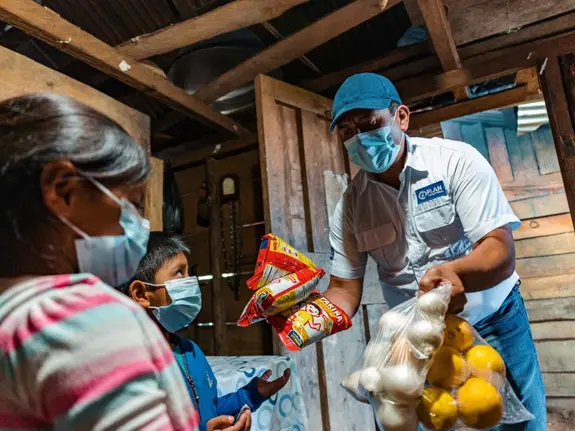
Reducing food insecurity
The barriers to food security vary. There might not be enough food. The food might be too expensive. Or the food might not be good.
Or it might be that a family isn’t earning enough money to buy food. They might live in difficult conditions after fleeing their home. Or they might rely on drought-affected crops to eat.
By addressing these barriers and helping families improve their access to food, children can better avoid hunger and malnutrition.
To do this, Plan International is working with communities and partners to provide immediate relief with food packages, water trucks and emergency cash or vouchers.
For the longer term, we’re also providing drought-resistant seeds, fishing equipment and helping communities to set up ways to earn money.
"I am part of a Plan International entrepreneurship project which supports women with their businesses... My dream for my future is to get ahead."
Francisca, expectant mother in Guatemala
Focus on nutrition
Plan International is also helping communities to improve the nutritional content of food available and provide key nutrition services.
These include malnutrition screenings, to find and help those at risk, and nutritional supplements that provide vital vitamins and minerals.
In Ramla’s school in Kenya, school meals are also making a difference and ensuring children get at least one nutritious meal a day.
“I can confidently say that the school feeding programme has brought hope for many children,” says Ramla.
“Children from different corners of Ganze, especially those who were not attending school before, are now benefiting from the food available.”
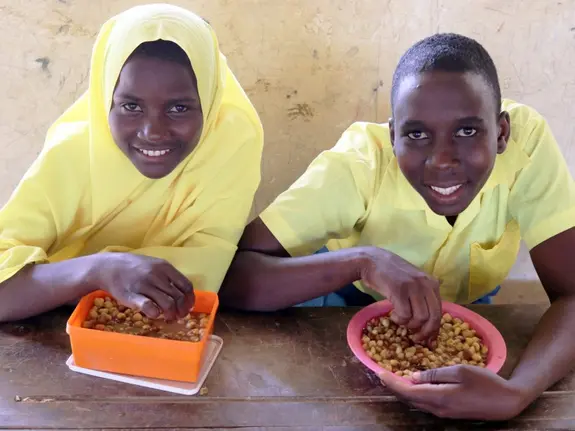
What needs to happen next
Many people, including children, are already at a life-threatening stage of hunger. And many others are quickly catching up to this devastating reality.
The scale of this far-reaching hunger crisis makes it difficult to tackle. But we must find ways to do so urgently – for girls and young women like Jenitor, Najma, Francisca, Ramla, Beti, and Amina.
Behind the statistics are more people just like them. Their lives, futures, hopes and dreams all matter. And they won’t achieve them on an empty stomach.
The situation is life threatening and something needs to be done.
— Jenitor, 19, Kenya
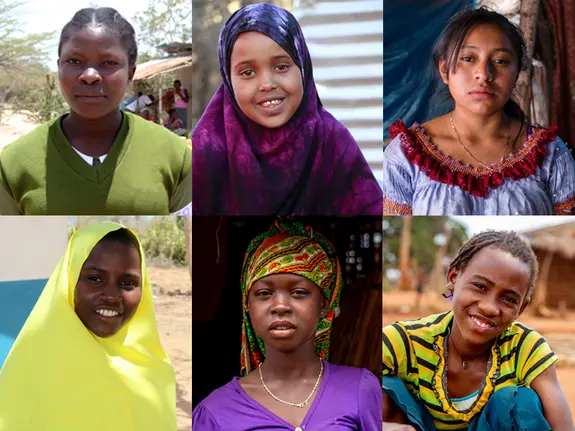
Plan International is expanding its work to help children through this crisis, especially girls, before it’s too late.
Through our Hunger Crisis Appeal, we are targeting those most affected in 8 countries: Ethiopia, Kenya, Somalia, South Sudan, Mali, Burkina Faso, Niger and Haiti.
We’re also upping the pressure on the UK Government to do more.
This includes calling on them to urgently commit to and disburse £750 million in new and additional aid to tackle the huge rise in hunger specifically in the Horn of Africa (a region of Eastern Africa).
This aid must reach girls with immediate nutritious food and measures to protect them from threats like child marriage and gender-based violence.
And we’re calling on the UK Government to galvanise the international community to act now on the global hunger crisis to save millions of lives.
You can play a role too.
If you can, please donate to our Hunger Crisis Appeal so we can do more for those most affected by this crisis.
If you can’t, please help spread the word by sharing this blog. This is a silent but deadly crisis and we need your support.

